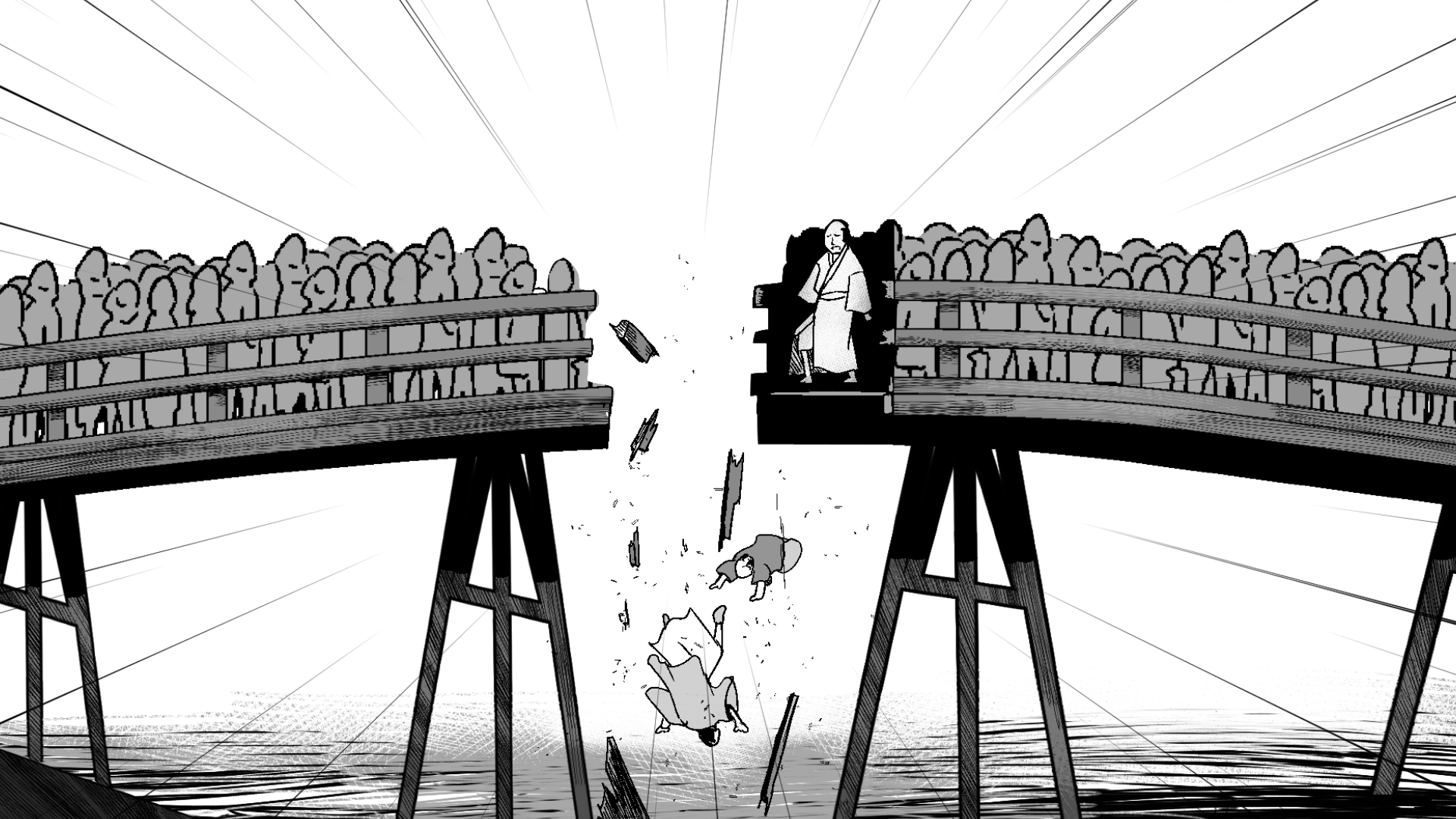Eitaibashi, a Bridge Connecting Koto ward and Chuo ward
Eitaibashi and the Accidental Collapse: One Samurai’s Quick Wit Saved the Day
When the Eitaibashi collapsed, one samurais quick wit saved many lives.

(Voice actor) Mr.Chris Koprowski

Ieyasu Tokugawa ended the warring period and a peaceful era came to Japan. After Ieyasu, the era in which members of the Tokugawa clan hold power was called the Edo period. This name comes from Edo (now Tokyo), the capital of the Tokugawa regime. The Edo period lasts for about 260 years, and there were almost no wars until the end of the Tokugawa regime when a war broke out between the regime and anti-regime forces. Therefore, the samurais of the Edo period almost never had any opportunities to use their swords. In fact, if they drew their sword for no reason, they were punished. When they drew their sword, they had to kill the opponent, so they were allowed to draw their sword only when they were ready for that. If they killed the opponent, there was a possibility that they would have to also commit seppuku. Since drawing their sword for no reason was a punishable offense, the samurais of the Edo period needed a strong conviction to draw their sword. As the Edo period was peaceful and there were no wars, people had the luxury of enjoying their lives. Common people and samurais went to scenic locations in Edo or went to pray in shrines and temples to enjoy their lives during breaks from jobs. Eitaibashi Bridge was a popular spot. In the Edo period when there were no high-rise structures like now, Eitaibashi Bridge was a spot with a view of Mt. Fuji, Mt. Tsukuba, the mountains of Hakone, and the Boso Peninsula. Also, Eitaibashi Bridge was close to Tomioka Hachimangu in Fukagawa and the people of Edo heading there to offer prayers would use this bridge, so it was very crowded regularly. However, bridges were made of wood back then. Many people coming and going meant that there was that much wear and tear. In order to maintain Eitaibashi Bridge, reconstruction was necessary. The Tokugawa regime, though, was considering taking down the bridge due to the cost. But the people of Edo thought that losing the bridge would be inconvenient, so they talked to the Tokugawa regime and offered to maintain the bridge themselves. The Tokugawa regime approved of this, and Eitaibashi Bridge would be kept. In 1807, on the day of the festival at Tomioka Hachimangu, Eitaibashi Bridge was packed with people. The crowd on the bridge proceeded very slowly. That was when the incident happened. One samurai suddenly drew his sword at the foot of the bridge and pointed his sword at the townspeople trying to cross. The townspeople stopped trying to cross, fearing the samurai. This samurai was an official of Edo Minamimachi Bugyo (a town magistrate) named Kosaemon Watanabe. At a time when samurais were punished for drawing their sword, why did Kosaemon draw his sword? And why did he threaten the townspeople?
"100 hidden stories of Tokyo" Application Download
Caution
This app contains in-app purchases.
Please note that packet data fees will be charged separately.



